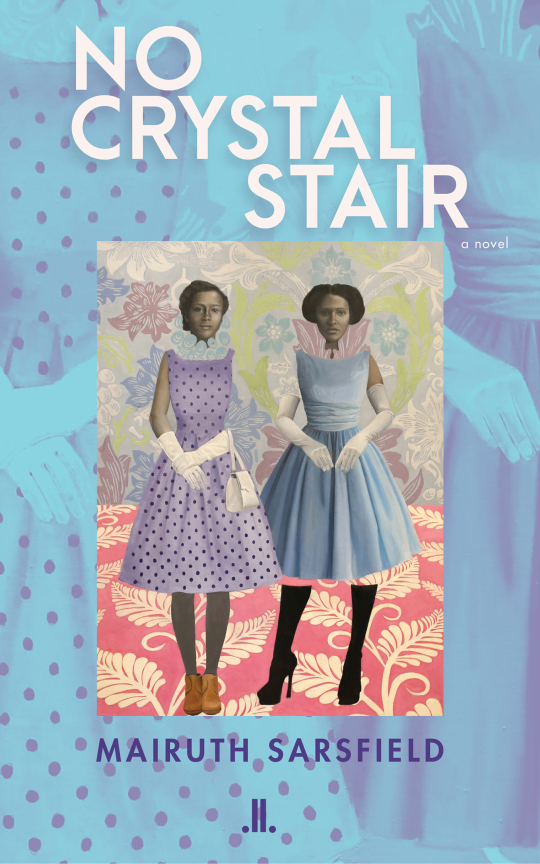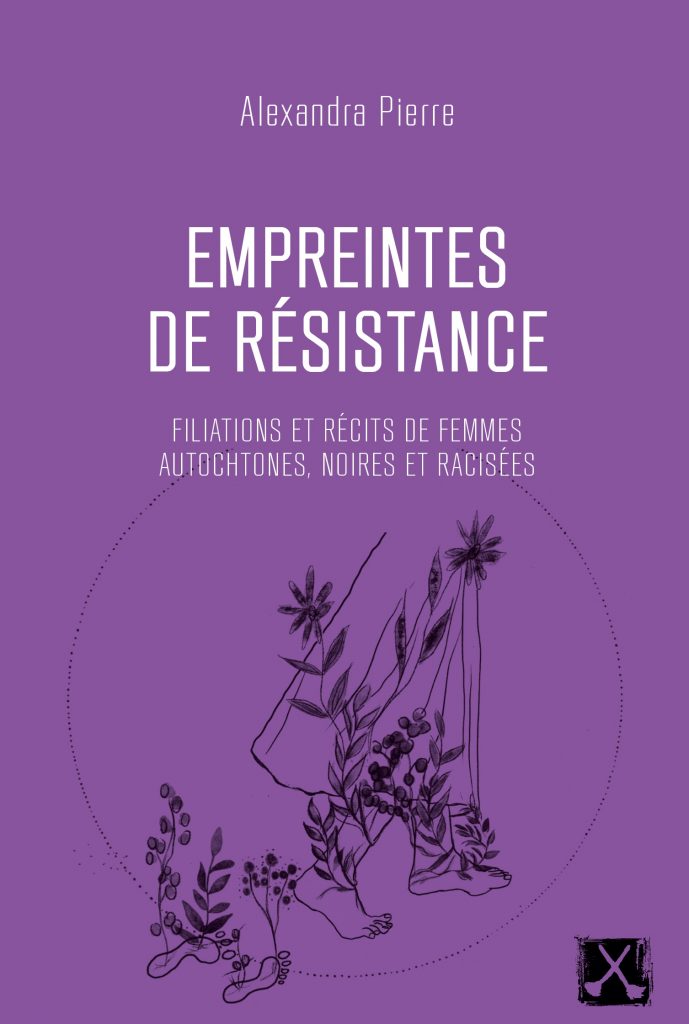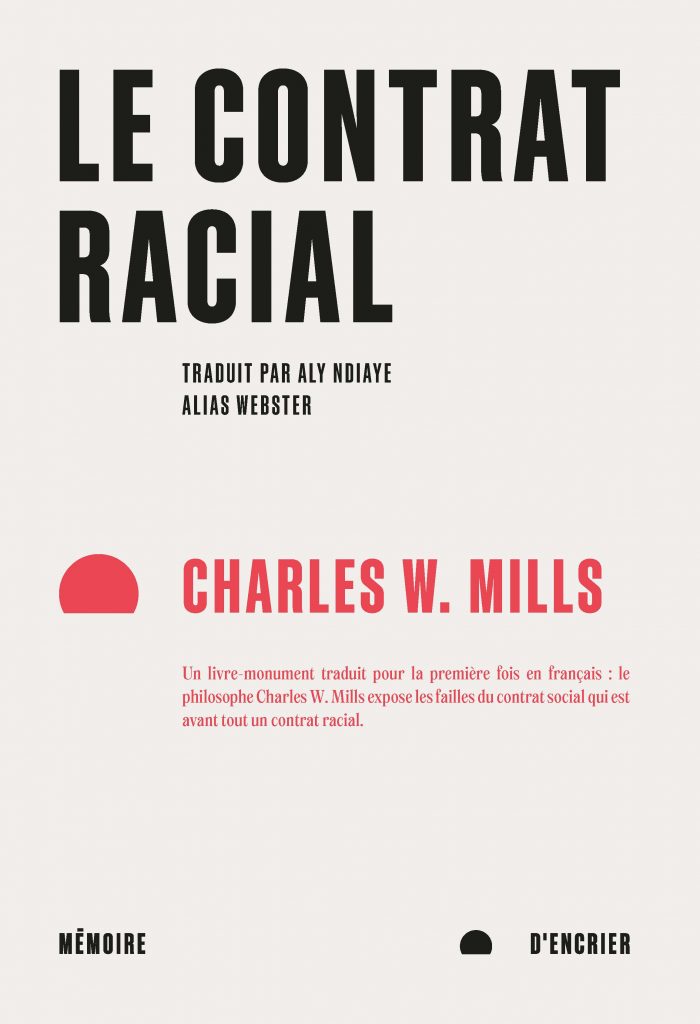Black Community Resource Centre
Where They Stood: The Evolution of the Black Anglo Community in Montreal
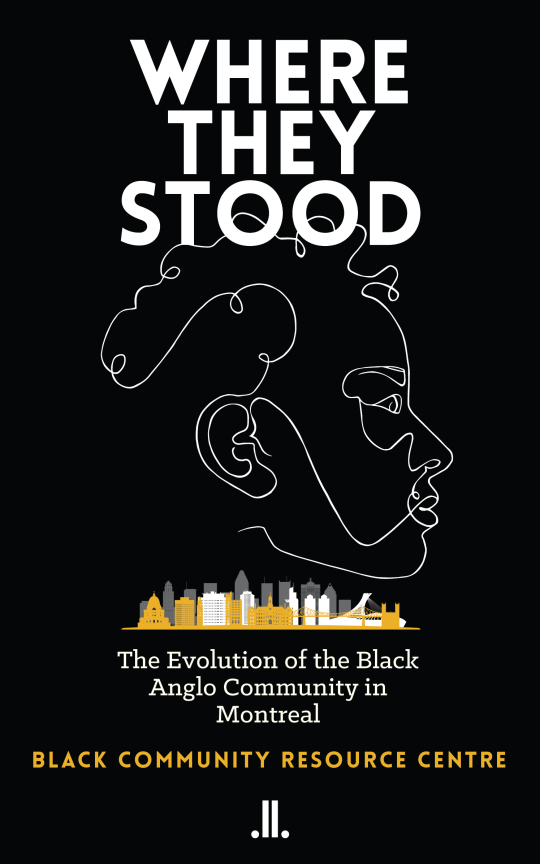
Keywords

Publication
Excerpt
“The suppression of Black stories is the concealment of history. It is imperative to acknowledge that Black stories have immense value in Canadian history, and that we have a right to be heard and understood in all media.” 1 1 Black Community Resource Centre. Where They Stood: The Evolution of the Black Anglo Community in Montreal.Linda Leith Publishing, 2023, p. 62.
“Many Canadians deny that racial discrimination exists in Canada … Discussions of discrimination in Canada and in particular Quebec are usually in connection with language rights and protections and their implications. But Canada and Quebec have a history of slavery, violence, and racism that has been neglected or excluded from the formal teaching of our history. So, whenever you walk the streets of Montreal, Black figures are hidden in the shadows. From your favourite café on Notre Dame Street to Old Montreal, from the streets of Little Burgundy to the ninth floor of Concordia University, they were there.” 2 2 BCRC. Where They Stood. pp. 76–77.
Biography
Where They Stood is a collaborative work bringing together exceptional young Black Canadian writers with senior scholars, researchers, community leaders, and mentors from Montreal’s Black Community Resource Centre (BCRC). While each chapter is written by individual contributors, the work is collectively authored by the BCRC.
Founded in 1995, the BCRC is a resource-based non-profit organization that aims to support and promote the well-being, success, and empowerment of the English-speaking Black community in Quebec. Their projects include Black in Quebec, the Intergenerational Health and Social Program, and Project B.L.A.C.Q. (Bridging Language and Culture in Quebec). The organization publishes a monthly newsletter, Semaji, 3 3 “Semaji.” BCRC, Black Community Resource Centre, https://bcrcmontreal.com/semaji/. and provides a list of resources and services for community members on their website. 4 4 BCRC, Lack Community Resource Centre, https://bcrcmontreal.com/.
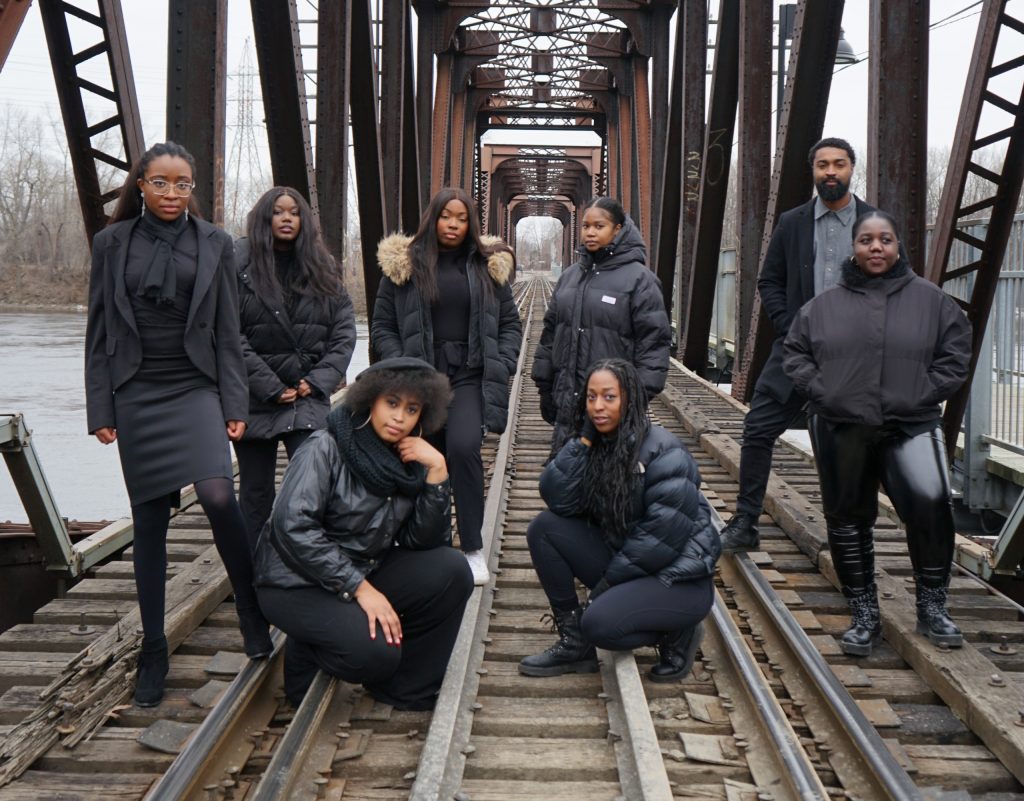
Summary
Where They Stood is an essay collection that sheds light on historical and cultural touchstones of the Black community in Montreal and in Quebec at large. The essays in the collection are arranged chronologically, beginning in the 1800s and ending in the present day, with the “aim to capture the most important milestones in Montreal’s Black history” and act as a resource “for all those willing to educate themselves on this largely untold history.” 5 5 BCRC. Where They Stood. p. xii. The collection covers key Black community organizations that were historically important to the social, cultural, and economic life of Black Montrealers: the Union United Church, the Coloured Woman’s Club (CWC), the Negro Community Centre (NCC), and the Universal Negro Improvement Association (UNIA). Where They Stood foregrounds diversity in the Montreal Black Anglo experience by exploring a variety of cultural and political topics, including the rich history and importance of jazz; Black sleeping car porters; discriminatory immigration policies; Black Canadian militia members, who fought for their country during World Wars I and II despite widespread prejudice and discrimination; the Prohibition era; Pan-Africanism; the Black diaspora; and the Black Power movement.
Situate the Work
The essays in Where They Stood have roots in many important disciplines: history, cultural studies, Black studies, and social justice studies. As aforementioned, the work reaches across several centuries to focus primarily on the Black Anglo community in Montreal, Quebec. Montreal’s Saint-Antoine district, known today as Little Burgundy, figures prominently in the book, as diverse Black populations from the West Indies, the United States, and Canada were concentrated in the neighbourhood prior to the 1960s. 6 6 BCRC. Where They Stood. p. 64. See Jessica Williams-Daley: “Montreal became home to several Black-led and [Black]-created community organizations and social bodies, as well as cultural hubs, and Black creativity, art, and talent flooded the streets of Montreal’s Saint[-]Antoine district, painting the city with an incredibly richlegacy.”
In their foreword, Sara DeMelo-Zare and Ayana Monuma write that the genesis of the project was the Black Lives Matter protests, which occurred in the wake of George Floyd’s murder on May 25, 2020:
We created Where They Stood to promote visibility, to popularize Black history beyond racism and slavery, and to highlight Black achievement. At a time of such injustice, we want to shine a light on the activists, the labourers, the immigrants, all the people who forged the path for new generations to walk. 7 7 BCRC. Where They Stood. p. ix.
By grounding the largely untold history of Montreal’s Black Anglo community within mainstream Canadian history, Where They Stood bridges gaps in knowledge and in historical records, making it ideal for pedagogical settings.
The collection addresses aspects of local and global history: Historical discussions of empire, settler colonialism, slavery, and the civil rights movement are juxtaposed with contemporary discussions of systemic racism, immigration policies, and the vast divide between the Global North and the Global South. Within these discussions, the work’s authors highlight Black brilliance and resilience; indeed, the pages of the work feature historical figures and sites that bear witness to Black achievement and call on new generations to benefit from a rich, storied history. Among the historical figures and sites featured are entertainment legend Oscar Peterson, one of the greatest jazz pianists of all time; Rockhead’s Paradise, the famous nightclub owned by the charismatic Rufus Rockhead; the Rising Sun Celebrity Jazz Club, founded by Rouè-Doudou Boicel; and war hero Owen Rowe, who fought for acknowledgement of Black Canadian soldiers’ contributions to the war effort (recognition was finally granted in 2005). The collection also touches upon influential community organizations, such as the Coloured Women’s Club (CWC), which as early as 1902 contested “the persistent structural inequity and racialized colonial hierarchy” embedded in mainstream Canadian society, 8 8 BCRC. Where They Stood. p. 23. and the Universal Negro Improvement Association (UNIA), which was founded by political activist Marcus Garvey.
Pan-Africanism, the Black Power movement, and key historical events such as the Congress of Black Writers and the Sir George Williams affair—the largest student occupation in Canadian history—are also present in the work.
Themes & Topics
Theme #1: Black Joy as Resistance
The foreword to Where They Stood makes clear that the work is not a catalogue of Black suffering. As DeMelo-Zare and Monuma write, “We want to counter the negativity often put forth when discussing Black history, and focus on moments of joy, positivity, and triumph.” 9 9 BCRC. Where They Stood. pp. ix–x.
DeMelo-Zare and Monuma argue that although popular culture and media often focus on the painful, traumatic historical events that have marked the Black community, the aim of the work is to foreground Black achievement and excellence. For this reason, the essays of Where They Stood present Black joy as a form of resistance to historical and contemporary oppression, racism, and exclusion.
A major throughline of the work is the history of jazz and its importance to Montreal’s Black community. In his essay “We Stand Tall Wherever We Are: A Community That Defies Borders,” Matthew Mullone describes jazz as “[a] form of artistic protest for the Black community,” as “the genre acted as a forum for self-expression and inclusion.” 10 10 BCRC. Where They Stood. p. 16. Indeed, jazz was a triumph for the Black community, helping Black people transcend historical and contemporary trauma and exclusion. In a later passage, DeMelo-Zare and Monuma note the following:
Although Montreal has the reputation of being more tolerant than other places, Black people were still often excluded from public spaces. The growing popularity of nightclubs in the city that hosted jazz musicians not only brought representations of Blackness into cultural spaces but also laid the foundation for Black resistance against the status quo. The opportunities created from having inclusive spaces not only helped to create Black mobility but also supported a sense of identity and belonging […] Jazz played a role in developing the Black diaspora in Montreal and was also a form of self-expression. 11 11 BCRC. Where They Stood. pp. 72–73.
In addition to the importance of the inclusive space offered by the jazz club, jazz itself embodied the irrepressible joy, vitality, and triumphant spirit of the Black community. It helped create Black mobility and self-expression, as well as a sense of identity, inclusion, and belonging. In Where They Stood, the kinetic and improvisational spirit of jazz is a form of Black joy as resistance.
Questions:
1- How do stories of Black joy and achievement counter harmful media representations of Black life? Can these stories challenge, and perhaps even change, dominant narratives surrounding Black history and culture? How can stories of Black joy and achievement take back power for or restore agency to Black communities?
2- Jazz was and still is a predominantly Black musical art form, one that centred and centres Black experience and ingenuity through musical prowess, invention, and play. Discuss jazz as a form of joy as resistance. What does it mean to use joy to resist oppressive power structures and regimes?
Activity:
Listen to the Spotify playlist chez baldwin, which reproduces the vinyl record collection of Black American writer James Baldwin. The playlist contains 467 tracks and features music by Aretha Franklin, Nina Simone, Bill Withers, Patti LaBelle, Donna Summers, Diana Ross, Stevie Wonder, Ray Charles, and Dinah Washington.
- Listen to three songs in a row. While listening, take in the music, the lyrics, and the stories within the songs. Jot down your feelings, impressions, or anything about the songs that sticks with you. Did you detect instances of Black joy? If so, how did these moments of joy embody resistance to oppression? What other emotions or stories did you detect? How does interacting with and thinking critically about Black music and art enhance our understanding of Black history? (This activity can be an individual reflection or a reflection in small groups. To generate discussion, have individual students or small student groups play clips of their songs and explain their interpretations to the class.)
Theme #2: Community Building and Support
Throughout Where They Stood, there are countless examples of Black community organizations created to provide essential services to the Black community. For example, Amanda Georgina Ghartey Asomani-Nyarko’s essay “They Came, They Saw, They Wanted Change” delves into the history of West Indian associations that sprung up to provide services to new immigrants.
The essays “A Change in Demography” by Yoanna Joseph and “Growth and Innovation: Building a Black Cultural Mosaic in 1980s–1990s Montreal” by Donna Fabiola Ingabire touch upon more contemporary community organizations, such as the Negro Community Centre (NCC), the National Black Coalition of Canada (NBCC), the Black Theatre Workshop (BTW), and Maison d’Haïti, among others. The community services mentioned in these essays offered job training, educational resources and support, legal advocacy, heritage and cultural celebrations, care for Black elders, and much more. As argued by the authors of Where They Stood, these community organizations, services, and supports were important in bringing together Black Anglo and Black diasporic communities.
Crucially, community building worked to ensure that Black life in Montreal not only survived but could thrive within mainstream white society—a society that was largely hostile to and prejudiced against Black people. Both aforementioned themes—Black joy as resistance and the importance of Black community building—demonstrate how Black people resisted their exclusion from the dominant white society, creating inclusive, public spaces and community organizations solely dedicated to the Black community. Whether it was in a jazz nightclub, where Black musicians could perform without fear of racist exclusion, or in community organizations such as the CBACM or the BASF, which Ingabire writes about in her essay, Black life could only truly thrive when Black people came together in community and solidarity. 12 12 See Donna Fabiola Ingabire’s essay “Growth and Innovation: Building a Black Cultural Mosaic in 1980s–1990s Montreal,” pp. 141–173. CBACM refers to the Council for Black Aging Community of Montreal (see pp. 154–155). BASF refers to the Black Academic Scholarship Fund (see pp. 160–164).
Questions:
1- Why are community organizations so important to marginalized people, that is, people who share a history of marginalization and exclusion from the dominant culture? In your answer, use examples from the text and from your own life experiences.
2- Which community organizations covered in the text were the most intriguing to you and why?
Activity:
Break students up into small groups and have them research a Black community organization mentioned in the text that is of interest to them. They can choose a historical organization, e.g., UNIA or NBCC, or an organization or initiative still operating today, e.g., BCRC, BTW, or the DaCosta Hall program. Each group will then give a small presentation on their chosen organization to the class, using visual or audio aids (photos, video clips, podcast and radio clips, PowerPoint slides, websites, community publications, newsletters, etcetera) to enrich and enliven their presentations.
Style & Aesthetics
Where They Stood is written in an informative, essayistic style. The book’s writing is approachable and accessible, as it is intended for a general audience. Each essay has a different author and covers a different theme or facet of Black life in Montreal, though some essays cover similar themes or share points of reference.
In the foreword, DeMelo-Zare and Monuma write, “Where They Stood was designed to be a collaborative project incorporating a diverse set of voices within a shared community. The team recruited Black English-speaking youth to author a book highlighting the important events and key figures that shaped Black Anglo Montreal.” 13 13 BCRC. Where They Stood. pp. x–xi. The collaborative nature of Where They Stood is highly significant; as Ingabire writes, “Black people are not a monolith and come from many different cultural backgrounds (especially in a city like Montreal).” Assembling by a collective of local young Black a book of essays by a collective of local young Black writers, all of whom come from “different neighbourhoods, backgrounds, and contexts,” reinforces the idea that Black people and their histories are far from monolithic. In Where They Stood, the medium is indeed the message.
Moreover, the work values and takes seriously the multiplicity of young Black voices—voices that have historically been and continue to be excluded for seeming too discordant, dissonant, or deviant. By collecting a diversity of young Black voices, the work challenges and unsettles literary tradition and the essay form, which have historically been associated with elitist notions of authority and expertise. Where They Stood insists that its young Black authors are authorities and experts on their own histories and lived experiences; thus, they should be taken seriously and, most of all, heard.
Resources
Podcasts:
- The Secret Life of Canada, CBC Podcasts
Ep. 1) “Porter Primers: Why were all porters called ‘George’?”
Ep. 2) “Porter Primers: How porters created Black neighbourhoods”
Ep. 3) “Porter Primers: The rise of jazz”
Ep. 4) “Porter Primers: Side hustles”
Ep. 5) “Porter Primers: A historic fight to unionize”
Ep. 6) “Porter Primers: Building a multicultural Canada”
- What’s Literacy? by Literacy Quebec
Ep. 64) Black History Month – BCRC Montreal
Books:
- Cummings, Ronald and Nalini Mohabir, editors. The Fire That Time: Transnational Black Radicalism and the Sir George Williams Occupation. Black Rose Books, 2022.
- Maynard, Robyn. Policing Black Lives: State Violence in Canada from Slavery to the Present. Fernwood Publishing, 2017.
- Williams, Dorothy W. The Road to Now: A History of Blacks in Montreal. Véhicule Press, 1998.
Reviews:
- Rwigema, Val. “Beyond Oppression: A review of Where They Stood by the Black Community Resource Centre.” Montreal Review of Books, 16 March 2023,
https://mtlreviewofbooks.ca/reviews/where-they-stood/.
Teaching Resources:
- “Black History in Canada.” Canadian Museum for Human Rights,
https://humanrights.ca/education-resources/.
Glossary
Systemic racism
Defined by the OED as “[d]iscrimination or unequal treatment on the basis of membership of a particular racial or ethnic group (typically one that is a minority or marginalized), arising from systems, structures, or expectations that have become established within society or an institution.” 14 14 “Systemic Racism.” Oxford English Dictionary, Oxford UP, 2024. In Where They Stood’s concluding essay, “A Continuum of Resistance,” author Fanta Ly writes that the Quebec Human Rights Commission did, at one point, acknowledge the existence of systemic racism in Quebec. However, since the summer of 2020 and amidst the global reckoning over anti-Black racism, Quebec’s provincial government has consistently denied the existence of systemic racism in Quebec.
Racial gaslighting
Defined by the OED as “[t]he action or process of manipulating a person by psychological means into questioning his or her own sanity.” 15 15 “Gaslighting.” Oxford English Dictionary, Oxford UP, 2023. In their essay “‘One God! One Aim! One Destiny!’ Wartime Activism and Early Postwar Garveyism, 1914–1919,” Sherwins Jean introduces racial gaslighting as “the phenomenon of making racialized communities doubt their perceptions of racism.” 16 16 BCRC. Where They Stood. p. 31. Jean uses the example of Dodson v. Loew’s Theatre, a case in which Black individuals were not admitted into a movie theatre because of racist discrimination. Although this was a clear instance of racial profiling, at the time, a high percentage of Canadian politicians “feign[ed] racial colour blindness.” 17 17 BCRC. Where They Stood. p. 31. Where They Stood touches on many instances of racial gaslighting throughout Canadian history, including housing and employment discrimination. The CAQ’s denial of systemic racism in Quebec is also an example of racial gaslighting.
Credits
L’Espace de la diversité recognizes the generous support of the Canada Council, the Conseil des arts et des lettres du Québec, the Conseil des arts de Montréal, and the Fondation Lucie et André Chagnon.
- Coordination: Emma Telaro
- Research and Writing: Felicia Gabriele
- Editing: Danielle Carter
Espace de la diversité
1260, rue Bélanger, Suite 201
Montréal, Québec, H2S 1H9
Phone: 438-383-2433
Related books
- 1 Black Community Resource Centre. Where They Stood: The Evolution of the Black Anglo Community in Montreal.Linda Leith Publishing, 2023, p. 62.
- 2 BCRC. Where They Stood. pp. 76–77.
- 3 “Semaji.” BCRC, Black Community Resource Centre, https://bcrcmontreal.com/semaji/.
- 4 BCRC, Lack Community Resource Centre, https://bcrcmontreal.com/.
- 5 BCRC. Where They Stood. p. xii.
- 6 BCRC. Where They Stood. p. 64. See Jessica Williams-Daley: “Montreal became home to several Black-led and [Black]-created community organizations and social bodies, as well as cultural hubs, and Black creativity, art, and talent flooded the streets of Montreal’s Saint[-]Antoine district, painting the city with an incredibly richlegacy.”
- 7 BCRC. Where They Stood. p. ix.
- 8 BCRC. Where They Stood. p. 23.
- 9 BCRC. Where They Stood. pp. ix–x.
- 10 BCRC. Where They Stood. p. 16.
- 11 BCRC. Where They Stood. pp. 72–73.
- 12 See Donna Fabiola Ingabire’s essay “Growth and Innovation: Building a Black Cultural Mosaic in 1980s–1990s Montreal,” pp. 141–173. CBACM refers to the Council for Black Aging Community of Montreal (see pp. 154–155). BASF refers to the Black Academic Scholarship Fund (see pp. 160–164).
- 13 BCRC. Where They Stood. pp. x–xi.
- 14 “Systemic Racism.” Oxford English Dictionary, Oxford UP, 2024.
- 15 “Gaslighting.” Oxford English Dictionary, Oxford UP, 2023.
- 16 BCRC. Where They Stood. p. 31.
- 17 BCRC. Where They Stood. p. 31.

